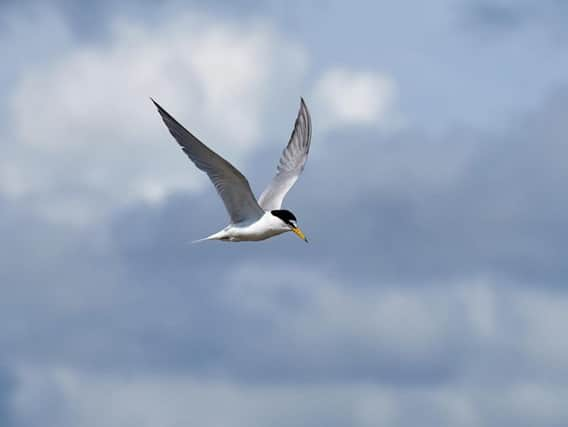Threatened birds under 24-hour guard at Yorkshire nesting site - Roger Ratcliffe
This article contains affiliate links. We may earn a small commission on items purchased through this article, but that does not affect our editorial judgement.


Advertisement
Hide AdAdvertisement
Hide AdThese slender, black-capped, silvery-grey and white birds - often mistaken for gulls by non-birdwatchers - are summer visitors to flashes created by mining subsidence along the Dearne Valley and at bird reserves like Fairburn Ings and St Aidan’s to the east of Leeds.
They are also known to nest on specially provided rafts at Rodley Nature Reserve beside the River Aire.
In childhood we are often introduced to common terns as “sea swallows”, but later we learn that this name is also applied to other members of the tern family because their tails are forked like the swallows we see flitting around fields.
Advertisement
Hide AdAdvertisement
Hide AdPersonally, I always thought it was stretching the imagination a bit to call them sea swallows, but a few years ago I saw my first little terns on the Yorkshire coast at Spurn and saw more of a comparison.
They are up to six inches smaller than common terns and an absolute joy to watch as they move along the shore with rapid wing beats, hovering over the surface of the sea before plunge-diving for fish. No wonder they are known in Galway as the fairy bird.
We are incredibly lucky to have a small colony of them at Spurn because the little tern is now Britain’s rarest breeding seabird. The species is in long-term decline around European shores and less than 2,000 pairs are known to breed in the UK, mostly in Scotland.
Not surprisingly, a 24-hour guard is kept on their Yorkshire nesting site, which is surrounded by an electric fence to deter anyone from trying to sneak up to the nest under the cover of darkness.
Advertisement
Hide AdAdvertisement
Hide AdBack in Victorian times, the old East Riding County Council mounted its own dedicated watch on the birds when they nested south of the present-day colony and were liable to disturbance by visitors to the Spurn peninsula. At that time there were almost 100 nests a year but now there are considerably less than half that number.
Egg collectors are less of a danger nowadays than natural predators. Foxes pose one of the biggest threats, and just one fox can wipe out the entire colony in a single night.
In the past the wardens who are part of the annual Little Tern Project run by Spurn Bird Observatory have even tried laying down lion dung, which apparently is enough to put off foxes, after a supply was obtained from a zoo.
Another threat posed to the little tern is from carrion crows, and a decade ago every egg was eaten when a flock of them found the colony.
Advertisement
Hide AdAdvertisement
Hide AdIf that was not bad enough, a strong north-easterly wind casting sea spray over the nesting site can also bring an abrupt end to the breeding season.
Yet these lovely little birds continue to somehow survive and it is hard to think of a cuter bird than little tern fledglings. In some places they are known affectionately as sea mice.